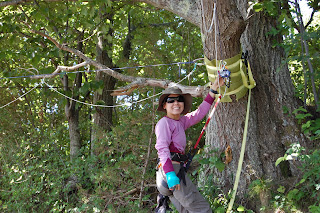Case in point -- the fish I love:
1) sturgeon!


2) paddlefish (photo to come later)
3) gar

 All primitive in appearance, yet finely tuned to getting the job done just the way they are. Which brings me to my topic today: horseshoe crabs!! What an eccentric little creature. While the media draws a lot of attention to those down in the mid-Atlantic, we happen to have these armored animals crawling around Great Bay in the summer and early fall as well. This is on the way to Adams Point on the bay.
All primitive in appearance, yet finely tuned to getting the job done just the way they are. Which brings me to my topic today: horseshoe crabs!! What an eccentric little creature. While the media draws a lot of attention to those down in the mid-Atlantic, we happen to have these armored animals crawling around Great Bay in the summer and early fall as well. This is on the way to Adams Point on the bay. I was out taking photos with researchers who are studying this curious creature. Jean, the Ph.D. student in charge of the project, is trying to learn how horseshoe crabs impact the "infauna" (organisms living in the mud) of the bay. Estimating the number of crabs that frequent this region is an exercise in futility (although she has tried by snorkeling when the tide is in), so she has to approach this from another angle. She is looking at the number of divots in the mud created by the crabs, and using a camera pulled across a line over the bay (that happens to look like a clothes line when not in use). She examines the video snapshots to estimate the activity going on in the mud.
I was out taking photos with researchers who are studying this curious creature. Jean, the Ph.D. student in charge of the project, is trying to learn how horseshoe crabs impact the "infauna" (organisms living in the mud) of the bay. Estimating the number of crabs that frequent this region is an exercise in futility (although she has tried by snorkeling when the tide is in), so she has to approach this from another angle. She is looking at the number of divots in the mud created by the crabs, and using a camera pulled across a line over the bay (that happens to look like a clothes line when not in use). She examines the video snapshots to estimate the activity going on in the mud.
 Jean and the camera line:
Jean and the camera line:
 No crabs there right now, they hang out in colder, deeper waters during low tide, and come back up to these spots at high tide. Jean says it's likely there is an abundance of their preferred food here (worms and clams) due to all the evidence of their activity. They can crush clam shells with their "arms" that have a special crushing apparatus, but also their gut functions like a gizzard and does a lot of the hard work to break down the shells.
No crabs there right now, they hang out in colder, deeper waters during low tide, and come back up to these spots at high tide. Jean says it's likely there is an abundance of their preferred food here (worms and clams) due to all the evidence of their activity. They can crush clam shells with their "arms" that have a special crushing apparatus, but also their gut functions like a gizzard and does a lot of the hard work to break down the shells.The most interesting aspect about my morning was watching scientists cross paths. While Jean was telling me about her project, a familiar-looking man walked up to us, covered in mud up to his knees and elbows, and asked her about her research. I realized this guy was Aria, a man whose research I have peripherally written about in the past: he is trying to determine the amount of mercury in our region's estuarine mud and learning how it cycles through the water and sediments.
 As it turns out, when horseshoe crabs dig up the mud to find their food, they are potentially altering nature's way of moving mercury around (and thus, providing different results for this man's research than he is getting at other sites). Both parties agreed to exchange information that would be mutually beneficial to their research results. I love it when science paths collide! The meeting of the minds.
As it turns out, when horseshoe crabs dig up the mud to find their food, they are potentially altering nature's way of moving mercury around (and thus, providing different results for this man's research than he is getting at other sites). Both parties agreed to exchange information that would be mutually beneficial to their research results. I love it when science paths collide! The meeting of the minds.More on Jean's research later when I go back out in the field with her!

No comments:
Post a Comment